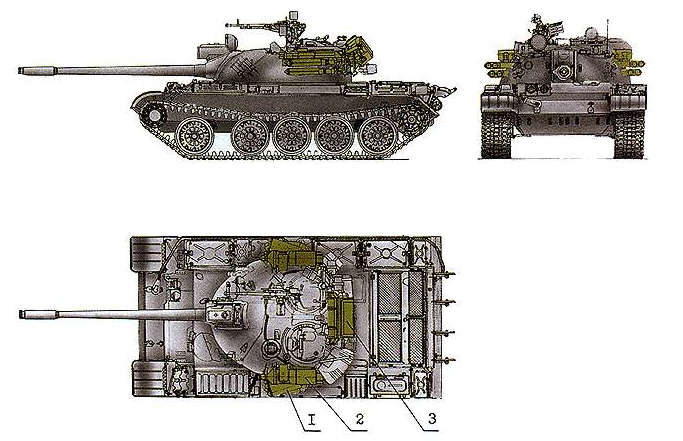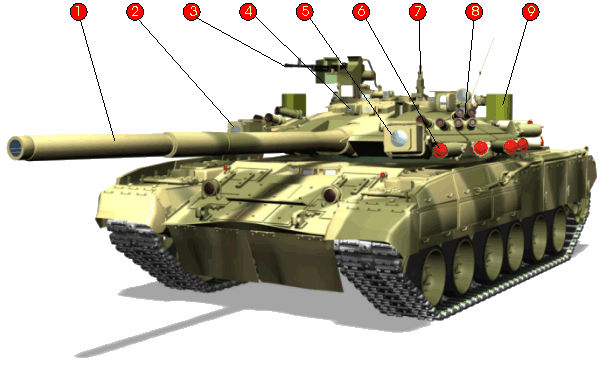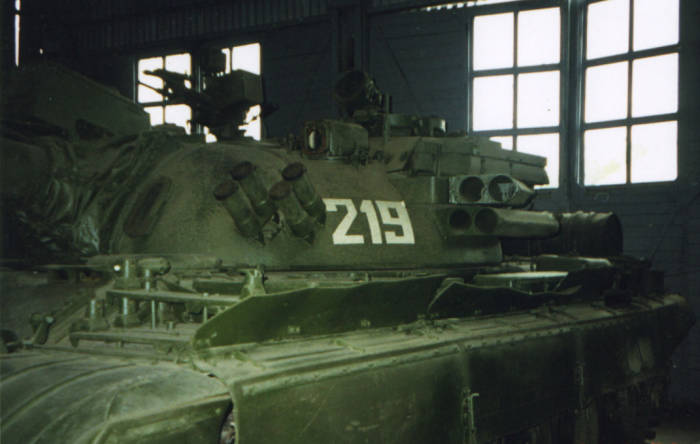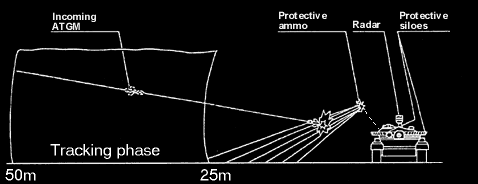Recurring problems of Soviet tank design
In my piece on the T-34 tank I said that postwar Soviet tanks (T-55, T-62, T-72, T-64, T-80) were built on the same principles as the T-34 with unfortunate consequences for the countries that had to use them in combat.
Soviet tanks have performed poorly in WWII, Korea, in the Middle East wars between the Israelis and Arabs and in Gulf War I, in the sense that they have suffered disproportionate losses against tanks that were comparable to them in general characteristics.
It is fascinating to see that the same problems are mentioned in US and Israeli reports separated by decades and referring to different vehicles. From the T-34 in the 1940’s to the T-62 in the Yom Kippur war the same limitations are noted!
Hull size
The T-34 had a huge problem with internal space due to several factors:
1). a large engine that took up roughly half of internal volume
2). its Christie suspension
3). the sloped armor on the sides and back of the vehicle
Postwar tanks did not have these faults but they also suffered from limited internal space since it was a design choice to limit the weight and size of these vehicles.
The result was that all the Soviet tanks were smaller and lighter than their Western contemporaries like the Centurion, M-48 and M-60. This supposedly gave them an advantage in mobility and presented a smaller target at long distances.
However there was a price to pay:
1). The smaller hull affected the performance of the crew and led to fatigue. For example an Israeli evaluation says: ‘As regard to human engineering the best were the Patton tanks (M60/48), then the Centurion and way behind the T-62/55 tanks. The meaning is that the crews of the Patton and Centurion tanks could fight longer periods of time without being exhausted relative to the crews in the T-62/55 tanks.’ [Source: ‘M60 Vs T-62: Cold War Combatants 1956-92’, p39]
2). Compared to Western tanks a smaller number of rounds could be carried. For example the T-34/76 carried 77 rounds but the T-34/85 carried only 56 and 16 of these had to be stored in the turret. In comparison the Pz IV had 87 rounds and the Panther 82.
The Centurion, M-48 and M-60 had about 60 rounds compared to about 40 in the T-55, T-62, T-72. The ability to carry more ammo meant that tanks did not have to leave the battle in order to resupply often. This was noted by the Israelis:
‘The amount of gun rounds inside the Patton (M60A1, M60, M48) and the Centurion tanks is remarkably higher (about 60 rounds in each) than in the T-62 and T-55 tanks (less than 40 rounds). The meaning is that on average the T-62 and T-55 tanks should leave their active fight and firing positions for refilling of gun ammunition [more often] than the other tanks, which means that on average the percentage of effective tanks in each moment is smaller in T-62 and T-55 units than in the units of the other tank types.’ [Source: ‘M60 Vs T-62: Cold War Combatants 1956-92’, p38]
3). By having ammo and fuel in a small space any penetration of the tank usually led to catastrophic loss of the vehicle and death of the crew. As Zaloga puts it in ‘T-34-85 vs M26 Pershing: Korea 1950’, p23:
‘Armor data provides only part of the picture of a tank's protection. Other factors in assessing the vulnerability of a tank include the internal arrangement of fuel and ammunition. The T-34-85 is a clear example of the trade-off between the benefits and drawbacks of steeply angled protective armor. Although the T-34's sloped sides reduced the likelihood of the tank being penetrated by enemy projectiles, it also led to a decrease in internal hull volume. In the event that the T-34 was penetrated, the projectile was far more likely to produce catastrophic damage among the fuel and ammunition stored in such a small space. The side sponsors of the T-34's fighting compartment in particular contained fuel cells that if penetrated could lead to fire and the destruction of the tank.’
The same problem was identified by the Israelis after the Yom Kippur war. According to ‘M60 Vs T-62: Cold War Combatants 1956-92’, p39:
‘Survivability: The silhouette of the T-62 and T-55 tanks is smaller than [that] of the other tanks and the same is true with the silhouette of their turret. One of the most [sic] disadvantages of T-62/55 tanks is their small internal volume. The meaning is that all the internal systems are too close and when one system is hit after penetration, in most cases another system or systems are also damaged or getting out of action. Because of the small internal volume there is in the T-55 tank a fuel tank combined with gun ammunition stowage in the right front corner of the hull (I am not sure if it is the same in the T-62 tank)[it is]. The meaning is absolute destruction and explosion of the tank in case of a penetration. Analysis based up tests and war analysis showed that the improved Centurion and M60A1 were more or less on the same level survivability. Next came the M48 and Tiran 4/5 and finally the Sherman.’
This problem became worse and worse as tank gun calibers grew and more powerful ammo was carried. Zaloga says in ‘M1 Abrams Vs T-72 Ural’, p27 that the T-55 carried 220kg of propellant, the T-62 310kg and the T-72 440 kg.
The result:
Turret size
The T-34/76 had a very cramped turret. An evaluation by US personnel noted:
‘The main weakness is that it is very tight. The Americans couldn't understand how our tankers could fit inside during a winter, when they wear sheepskin jackets’
Postwar Soviet tanks had a new hemispherical turret design. This had excellent ballistic protection due to the sloped design but it was very cramped and it seriously affected crew performance and gun depression.
Reload rates
The cramped interior of Soviet tanks limited the speed with which the crew could operate the gun.
The T-34 had a low reload rate of about 4 rounds per minute versus 2-3 times that in German and Western tanks. The same problem was noted in postwar Soviet tanks of the T-55 and T-62 type.
The Soviets tried to solve this problem by installing an autoloader in the T-64, T-72 and T-80 tanks. This equipment however has a bad reputation due to many cases of malfunction when it was first introduced.
Gun depression
Soviet tanks from the T-34 onwards had poor gun depression which meant they could not fight in hull down position. Western tanks used this tactic with success especially in the Golan front during the Yom Kippur war. From various Osprey books I collected the following statistics:
An Israeli report noted: ‘The T-62 and T-55 tanks have [limited] depression of their gun, up to about -6 to -7 degrees, whereas all the others have gun depression of about -10 degrees. The meaning is that in many cases the T-62 and the T-55 tanks, while in firing position (behind a fold or a small hill) did not have enough depression and so had to expose themselves more and be more vulnerable to the other side.’ [Source: ‘M60 Vs T-62: Cold War Combatants 1956-92’, p38]
Gun performance
Soviet tank guns of WWII developed lower pressure than Western ones with the result that their accuracy and penetration at long ranges suffered. Did the same problem affect postwar vehicles?
The Israelis found the gun of the T-62 to be quite powerful. However a US test of its accuracy showed that after 1km its ability to hit targets was limited. The M-60’s 105mm was significantly more accurate at long ranges. [Source: ‘M60 Vs T-62: Cold War Combatants 1956-92’, p50-52]
Suspension
The T-34 had poor stability over rough terrain due to its Christie suspension. Postwar Soviet tanks had torsion bar suspension but the ride continued to be uncomfortable and tiring for the crew.
The dogma of quantity over quality
Why did all the Soviet tanks suffer from the same limitations? The answer is that the Soviet military doctrine emphasized the importance of numbers and the inevitability of heavy casualties. If you expect your tanks to be destroyed quickly then it doesn’t make sense to build expensive ones lavishly equipped with armor and with an emphasis on crew comfort. Instead their goal was to keep weight and size down so they could out produce the West.
The factories of the Eastern bloc churned out thousands of tanks during the cold war and certainly had a big numerical advantage against the West. They also succeeded in building vehicles that were well armed and armored for their time. However their emphasis on production numbers meant that soft flaws (cramped interior, poor gun depression etc) limited their performance in the battlefield.
Western tanks were built on different lines and although they usually had comparable weapons and armor ‘on paper’ in the field of battle they outperformed their Eastern counterparts.
Christos military and intelligence corner: Recurring problems of Soviet tank design




















